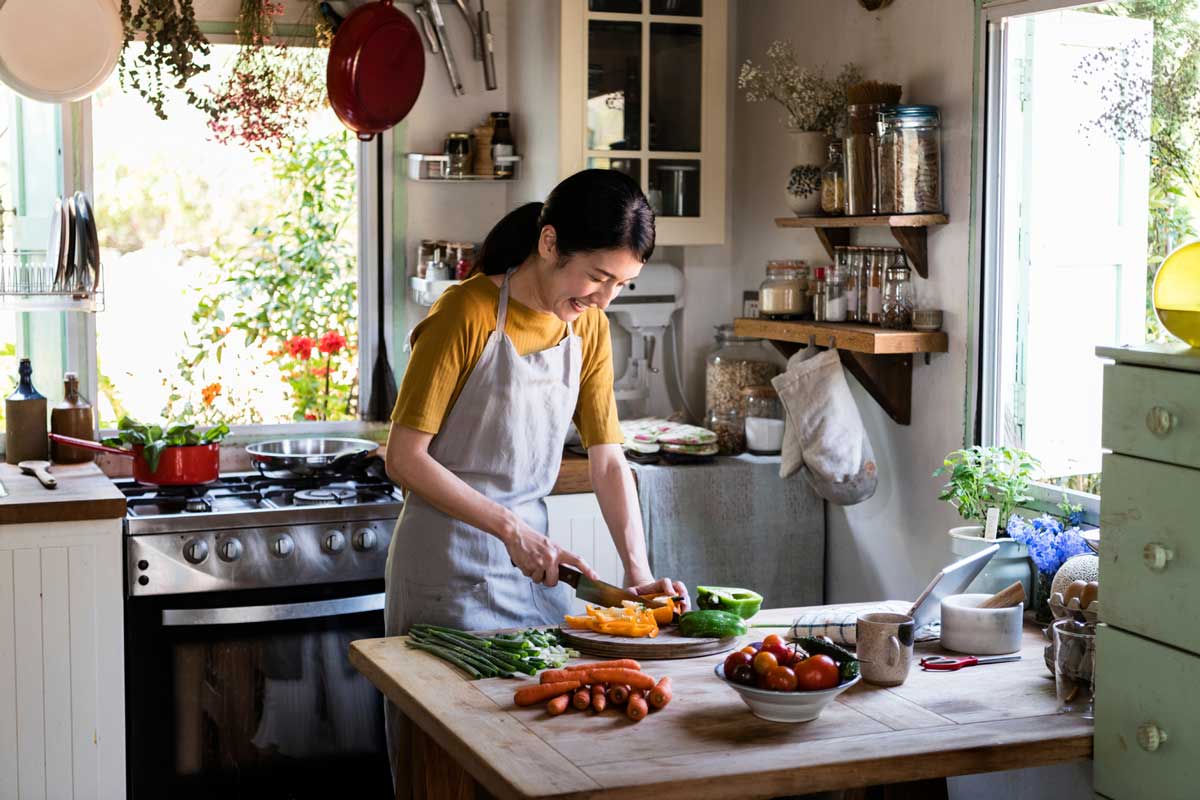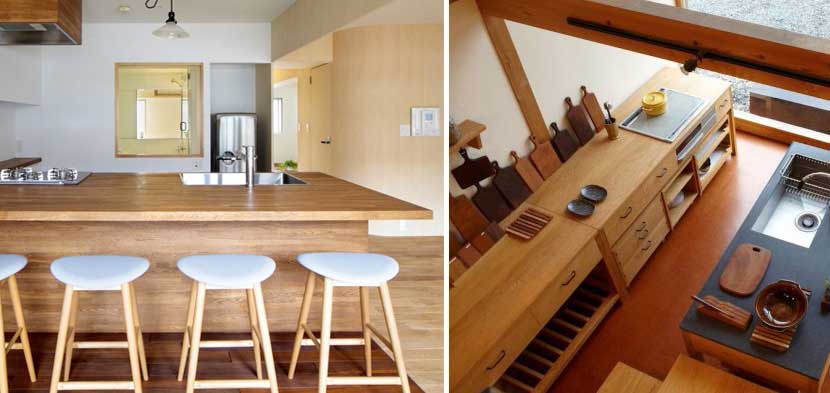The New Era of Dining Rooms — Why 2025 Marks a Renaissance
Introduction: A Fresh Chapter in Dining Room Evolution
The dining room, once a formal, rarely used space, is experiencing a vibrant renaissance in 2025. No longer just a place to eat, it has evolved into a multifunctional hub — a blend of style, technology, wellness, and social connection. This transformation reflects broader cultural shifts in how we live, work, and prioritize moments with loved ones.
As lifestyles become more flexible and health-conscious, dining rooms are being reimagined as spaces that nurture not only physical nourishment but emotional and social wellbeing too. This article explores the latest trends redefining the dining room experience and design, setting the stage for the modern home’s heart in 2025.
1. From Formal to Flexible: The Rise of Multifunctional Dining Spaces
-
Hybrid Functionality: Dining rooms now double as remote workspaces, art studios, or even fitness zones during the day, thanks to modular furniture and smart storage solutions.
-
Open Concept Living: The boundaries between kitchen, dining, and living areas blur further, encouraging fluid movement and interaction.
-
Adaptable Layouts: Movable partitions, foldable tables, and convertible seating allow families to customize the space for any occasion, from intimate dinners to lively gatherings.
2. Technology as the New Centerpiece
-
Smart Tables and Surfaces: Interactive tabletops enable digital menus, family photos slideshow, and even games, making meals more engaging.
-
Integrated Lighting Systems: Circadian rhythm-friendly lighting that adjusts to natural daylight patterns improves mood and digestion.
-
Voice-Activated Controls: From adjusting music to ordering groceries, voice commands simplify dining experiences without disrupting social flow.
3. Wellness-Centered Design: Prioritizing Health at the Table
-
Ergonomic Seating: Chairs and benches designed to promote proper posture reduce fatigue and enhance comfort during long meals.
-
Air Quality Control: Smart purifiers and natural ventilation systems keep the dining area fresh and allergy-free.
-
Sustainable Materials: Bamboo, reclaimed wood, and non-toxic finishes reflect growing eco-awareness among homeowners.
4. Aesthetic Trends Shaping 2025 Dining Rooms
-
Warm Minimalism: Clean, simple lines with warm hues and natural textures create inviting yet understated elegance.
-
Vintage Revival: Mid-century modern and retro-inspired furniture pieces add nostalgic charm balanced with modern functionality.
-
Maximalist Flair: Bold patterns, eclectic accessories, and layered textures cater to those craving personality and vibrancy.

Everything You Need to Know About Kitchen Cabinets in 2025
Table: Key Features of 2025 Dining Room Trends
| Trend Category | Description | Example Features |
|---|---|---|
| Multifunctionality | Spaces serve multiple roles | Foldable tables, smart storage |
| Technology Integration | Enhancing interaction and convenience | Smart tables, voice control lighting |
| Wellness & Comfort | Focus on health and wellbeing | Ergonomic chairs, air purifiers |
| Design Aesthetics | Reflecting personality and cultural values | Warm minimalism, vintage revival |
Social Dynamics and Dining Rituals in the Modern Era
1. The Social Heartbeat of the Dining Room: More Than Just a Meal
In 2025, dining rooms serve as a vital social hub where families, friends, and communities reconnect. The shift from isolated eating to shared experiences highlights a growing desire for meaningful interaction.
-
Intentional Gatherings: Meals become intentional events designed to foster connection, mindfulness, and gratitude.
-
Tech-Enhanced Interaction: While technology facilitates convenience, it also enhances social bonds with features like shared playlists, interactive conversation starters, and virtual guest participation.
-
Inclusive Spaces: Design accommodates diverse family structures, cultural traditions, and accessibility needs, ensuring everyone feels welcome at the table.
2. Redefining Dining Rituals
-
Mindful Eating Practices: Emphasizing presence, slower eating, and savoring flavors to improve digestion and enjoyment.
-
Customizable Ambiance: Smart lighting and sound systems adjust to suit the mood — from lively brunches to intimate dinners.
-
Multi-Sensory Engagement: Incorporating aroma diffusers, textured tableware, and curated music playlists to elevate the dining experience beyond taste.
3. Food Sustainability and Ethical Dining
-
Local and Seasonal Focus: Dining rooms encourage the celebration of locally sourced, seasonal ingredients through displays and kitchen proximity.
-
Waste Reduction: Integrated composting units and waste separation systems within or near dining spaces promote eco-friendly habits.
-
Plant-Based Options: Increased awareness of plant-based diets influences menu choices and dining aesthetics with greenery and natural motifs.
4. Community and Virtual Dining
-
Virtual Dinner Parties: Using large interactive screens and smart tables, families and friends connect across distances for shared meals.
-
Pop-Up Dining Events: Homeowners host themed, experiential dinners incorporating elements like immersive décor and augmented reality.
-
Neighborhood Table Initiatives: Community-driven dining gatherings foster local connections, supported by flexible dining spaces adaptable for group events.
Table: Social and Ritual Trends in 2025 Dining Rooms
| Trend | Description | Impact |
|---|---|---|
| Intentional Gatherings | Purposeful meals fostering connection | Enhanced family bonding |
| Mindful Eating | Slower, more present dining | Improved digestion and wellbeing |
| Sustainability Focus | Local sourcing, waste reduction | Reduced environmental footprint |
| Virtual Dining | Remote shared meals via technology | Maintained long-distance ties |

2025 Kitchen Design Essentials
Furniture, Lighting & Décor Trends Shaping the Modern Dining Space
1. Furniture Innovations: Where Comfort Meets Style
-
Modular and Movable Pieces: Lightweight, modular tables and seating that can be reconfigured for different occasions. Perfect for transitioning between work, family meals, and entertaining.
-
Sustainable Craftsmanship: Artisanship using reclaimed and eco-friendly materials continues to rise, emphasizing durability and ethical production.
-
Ergonomic Designs: Chairs and benches engineered for posture support, blending health with aesthetic appeal.
-
Statement Pieces: Bold, handcrafted dining tables or sideboards serve as focal points, combining tradition and modernity.
2. Lighting That Transforms Atmosphere
-
Dynamic Lighting Systems: Smart LED fixtures that adjust color temperature and brightness according to time of day and activity.
-
Layered Lighting: Combination of ambient, task, and accent lighting to create versatile moods.
-
Natural Light Maximization: Architectural elements such as skylights, large windows, and reflective surfaces increase daylight exposure, enhancing wellbeing.
-
Decorative Fixtures: Artistic chandeliers and pendant lamps crafted from natural fibers, metals, or glass add texture and personality.
3. Décor Trends: Personal Expression Meets Function
-
Textured Walls and Surfaces: Use of wallpapers, wood paneling, and woven fabrics to add depth and warmth.
-
Botanical Elements: Indoor plants, floral arrangements, and green walls bring freshness and promote calm.
-
Artisanal Tableware: Handmade ceramics and glassware with unique finishes emphasize individuality.
-
Cultural Influences: Incorporation of global design motifs — from Scandinavian minimalism to Mediterranean rusticity — adds a cosmopolitan flair.
4. Smart Integration in Décor
-
Concealed Tech: Wireless chargers, hidden speakers, and integrated control panels maintain a sleek aesthetic without sacrificing functionality.
-
Interactive Surfaces: Tables embedded with touchscreens or projection mapping for dining customization and entertainment.
-
Adaptive Furniture: Pieces that adjust height or shape automatically to fit user needs and preferences.

young-slim-beautiful-woman-in-kitchen-making-breakfast-on-pan-sexy-housewife-sensual-dinning-room-household-appliances-skinny-body-tanned-skin-photo
Table: Key Furniture & Lighting Features for 2025 Dining Rooms
| Feature | Description | Benefit |
|---|---|---|
| Modular Furniture | Reconfigurable tables and seating | Flexibility for multiple uses |
| Smart Lighting Systems | Adjustable brightness and color temperature | Enhanced mood and comfort |
| Natural Materials | Use of wood, fibers, and ceramics | Sustainability and warmth |
| Concealed Technology | Hidden wireless and smart tech | Sleek design with modern utility |
Wellness and Sustainability — The Heart of 2025 Dining Rooms
1. Designing for Physical and Mental Wellness
-
Ergonomics and Comfort: Seating designed to support spinal alignment and reduce fatigue encourages longer, more comfortable meals and gatherings.
-
Biophilic Design: Incorporation of natural elements like plants, natural light, and organic materials helps reduce stress and increase feelings of calm.
-
Air Quality and Ventilation: Advanced air purifiers and smart ventilation systems maintain fresh air flow, critical in enclosed dining spaces.
-
Acoustic Comfort: Sound-absorbing materials and design reduce echo, making conversations clearer and more intimate.
2. Sustainable Materials and Practices
-
Eco-Friendly Materials: Preference for FSC-certified woods, recycled metals, and low-VOC (volatile organic compounds) paints minimizes environmental impact.
-
Durability Over Disposable: High-quality, long-lasting furniture and décor reduce waste and promote sustainable consumption.
-
Local Sourcing: Supporting local artisans and manufacturers cuts carbon footprints and nurtures community economies.
-
Waste Reduction Systems: Integrated compost bins and recycling stations encourage responsible dining habits.
3. Smart Sustainability Features
-
Energy-Efficient Appliances: LED lighting and smart controls reduce energy consumption.
-
Water-Conserving Fixtures: Smart faucets and water dispensers minimize waste during food preparation and cleaning.
-
Sustainable Textiles: Use of organic cotton, hemp, and recycled fibers for table linens and upholstery.
-
Waste Monitoring: Smart sensors track and reduce food waste, supporting eco-conscious behavior.

Mastering Kitchen Design: Space, Style, and Smart Appliances for Your Home
4. Wellness-Driven Dining Rituals
-
Mindful Eating Spaces: Creating environments free from distractions to promote presence and gratitude during meals.
-
Hydration Stations: Dedicated areas with infused water dispensers encourage healthy hydration habits.
-
Nutrition-Focused Design: Spaces that support meal prepping, portion control, and access to healthy foods foster better eating practices.
Table: Wellness & Sustainability Features in 2025 Dining Rooms
| Feature | Description | Benefit |
|---|---|---|
| Biophilic Elements | Natural light, plants, organic materials | Reduced stress, improved mood |
| Eco-Friendly Materials | FSC wood, recycled metals, low-VOC finishes | Lower environmental impact |
| Smart Energy Controls | LED lighting, smart thermostats | Energy and cost savings |
| Waste Reduction Systems | Composting, recycling, waste tracking | Promotes sustainable behavior |
Cultural Influences and The Future of Dining Rooms
1. Global Inspirations Shaping Dining Rooms
-
Fusion of Traditions: Designers blend elements from diverse cultures, such as Japanese minimalism with Mediterranean warmth or Scandinavian simplicity with African textures, creating unique and inviting spaces.
-
Artisan Craftsmanship: Global artisanship is celebrated through handcrafted furniture, textiles, and décor, emphasizing heritage and storytelling.
-
Cultural Rituals: Traditional dining customs influence modern rituals — from communal sharing platters to tea ceremonies — enriching the dining experience.
2. The Dining Room as a Multifunctional Space
-
Hybrid Usage: Dining rooms double as workspaces, classrooms, or creative studios, reflecting evolving lifestyles.
-
Flexible Design: Furniture and layouts adapt easily to various activities, from formal dinners to casual family time.
-
Tech Integration: Virtual reality and augmented reality tools enable immersive dining experiences and remote social gatherings.
3. The Future Outlook: What’s Next for Dining Spaces?
-
Sustainability at the Core: Increasing demand for zero-waste, carbon-neutral designs.
-
Personalized Experiences: AI-driven customization of lighting, temperature, and even table settings based on individual preferences.
-
Health-Centric Design: Spaces that actively promote nutrition, mental well-being, and social connection.
-
Smart Connectivity: Seamless integration with smart home systems for convenience and efficiency.

couple-having-fun-home-kitchen-happy-married-couple-having-fun-home-kitchen-funny-men-women-love-dancing-enjoying
4. Why Embrace the Dining Room Renaissance?
-
Reconnection: Encourages meaningful social interactions in a fast-paced world.
-
Well-being: Supports physical and mental health through thoughtful design.
-
Sustainability: Reflects a commitment to environmental responsibility.
-
Cultural Richness: Honors diverse heritages and fosters community.
Table: Future Dining Room Trends at a Glance
| Trend | Description | Impact |
|---|---|---|
| Hybrid Spaces | Multipurpose dining rooms | Increased flexibility |
| AI Customization | Personalized ambiance and settings | Enhanced user comfort |
| Zero-Waste Designs | Sustainable materials and waste elimination | Environmental conservation |
| Cultural Fusion | Integration of global design influences | Unique, meaningful aesthetics |
Conclusion
The dining room renaissance of 2025 redefines how we eat, gather, and design our homes. It is a harmonious blend of tradition and innovation, utility and elegance, sustainability and wellness, and local roots with global inspiration. Embracing these trends not only enhances our daily lives but also strengthens our connections—to others, to nature, and to ourselves.
Bonus: Expert Tips & Innovations to Elevate Your 2025 Dining Room
1. Expert Insight: Designing for Togetherness
“The dining room is no longer just a place to eat; it’s the heart of the home — where stories are shared and memories made. Designing for togetherness means prioritizing comfort, flexibility, and ambiance.”
— Lena Carver, Interior Designer
2. Actionable Tip: Incorporate Adjustable Seating
Invest in seating options that can be adapted for different occasions — from plush chairs for long dinners to stackable stools for casual gatherings. This versatility encourages more frequent use and socializing.

romantic-black-couple-kissing-cooking-healthy-food-together-kitchen-romantic-black-couple-kissing-cooking-healthy
3. Smart Tech Hack: Voice-Controlled Ambiance
Use voice assistants (e.g., Alexa, Google Home) to control lighting, music, and even window shades to create the perfect dining atmosphere effortlessly.
4. Wellness Boost: Add a Green Corner
Dedicate a small area to house air-purifying plants like snake plants or peace lilies. Not only do they improve air quality, but they also bring calming greenery to your dining space.
5. Sustainable Shopping Guide
Choose furniture and décor with certifications like FSC (Forest Stewardship Council) or made from recycled/upcycled materials. Support local artisans to reduce carbon footprint and add unique character.
6. Trend Alert: Mix Textures and Materials
Combine wood, metal, glass, and textiles to add depth and tactile interest. For instance, a reclaimed wood table with velvet upholstered chairs and metal light fixtures creates a balanced, sophisticated look.
7. Quick Win: Use Table Runners and Centerpieces
Seasonal table runners and fresh or dried floral centerpieces can instantly refresh your dining room aesthetic without a full redesign.


